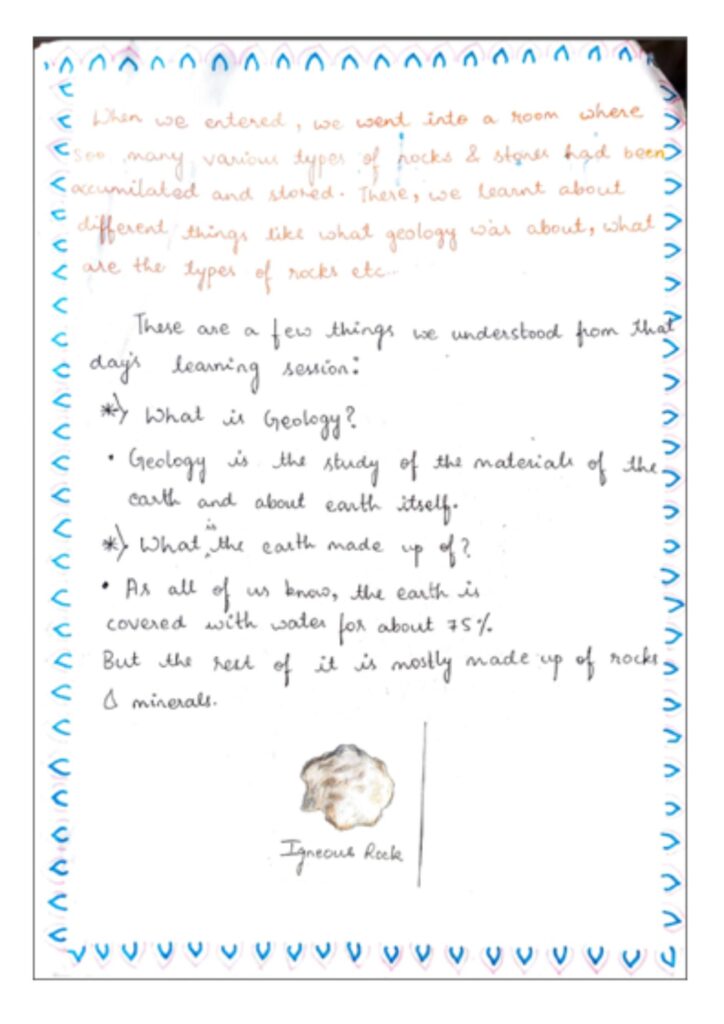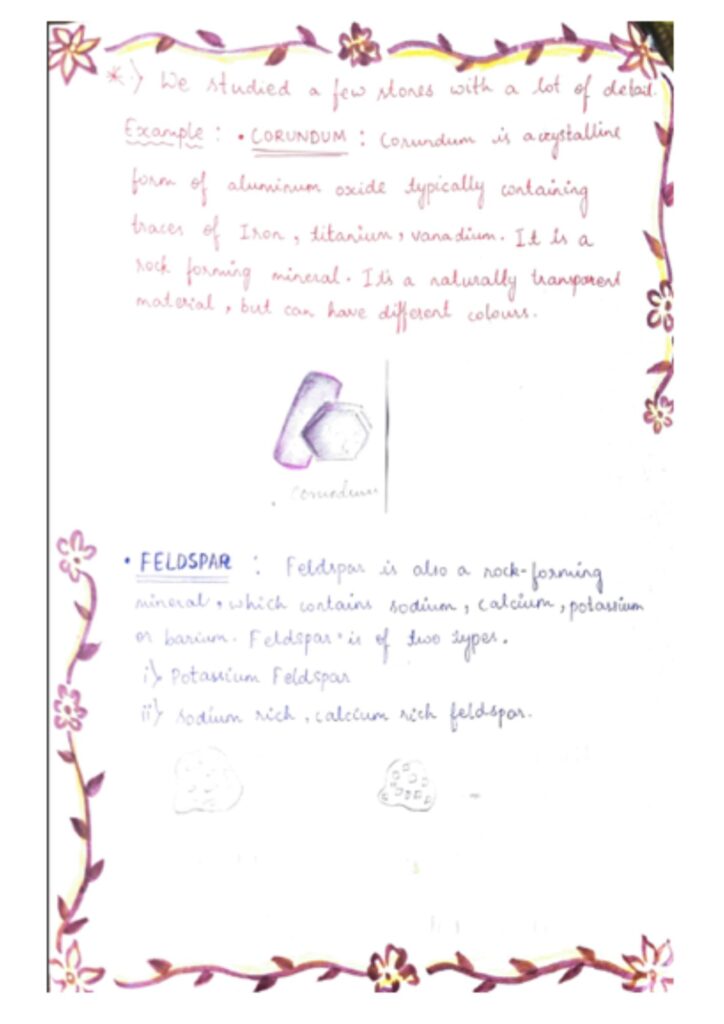
On the 9th January 2023, we went on a study trip to KHANIJ BHAVAN. At first, we were confused about what khanij bhavan was. As the name suggested, it was a department of mines and rocks. In the previous few weeks, we all had learnt about the various types of minerals and mainly about rocks. This was a part of our mineralogy block. As we learnt most of the things in a theoretical form, it was nice to experience those learnings in a practical form/way.
In Khanij Bhavan we got to meet this totally amazing tutor/guide. Her name was Manimala. She is a professional geologist and she was the reason, we got such a good opportunity to learn about geology and various other things.
When we entered, we went into the room where so many various types of rocks and stones had been accumulated and stored. There, we learnt about different things like what geology was about, what are the types of rocks etc.
These are the few things we understood from the day’s learning session:
- What is Geology?
Geology is the study of materials of the earth and about the earth itself. - What is the earth made of?
As all of us know, the earth is covered with water for about 75%. But the rest of it is mostly made of rocks and minerals.


- We also learnt about 3 types of rocks:
1) Igneous rocks
2) Metamorphic rocks
3) Sedimentary rocks
- We learnt in depth about the layers of earth.
- We also learnt about the rock cycle.
We studied a few stones with a lot of detail. For example:
- CORUNDUM: Corundum is a crystalline form of aluminium oxide typically containing traces of iron, titanium, vanadium. It is a rock forming mineral. It is a naturally transparent material, but can have different colours.
- FELDSPAR: Feldspar is also a rock-forming mineral, which contains sodium, calcium, potassium or barium. Feldspar is of two types:
- Potassium Feldspar
- Sodium rick, calcium rick feldspar


We also figured out the physical properties of how to find minerals.
For example: We took a few minerals and striked it on a streak plate. Streak plate is a ceramic material that is used to determine a mineral or the colour of it.
Eg:
- Hematite is a red stone, and its streak is also red.
- Magnetite is a black stone, and its streak is jet black.
- Quartz was clear/white in colour but the Quartz stone was harder than the ceramic plate / streak plate. Therefore, no colour was seen.
We did an experiment with 3 stones from Mohs Test. We found all the physical properties of the stones.
| HARDNESS | 3 | 6 | 7 |
| COLOUR | White | White | White |
| FRACTURE | Even | Even | Rough |
| CLEAVAGE | 2 Sets | 1 Set | -No- |
| STREAK | White | White | White |
| LUSTER | Dull | Dull | Shiny |
| SPECIFIC GRAVITY | Medium | Medium | Heavy |
| FEEL | Smooth | Smooth | Rough |
| MAGNETIC | -No- | -No- | -No- |
|
ACID REACTION |
Yes | No | No |
Calcite Feldspar Quartz


We also learnt about Mohs hardness scale. This scale was developed by Friedrich Mohs, a German geologist in the early 19th century.
“A hard material will scratch a softer material”.
This was the reference to make the order:
10) DIAMOND (hardest)
9) CORUNDUM
8) TOPAZ
7) QUARTZ
6) ORTHOCLASE
5) APATITE
4) FLUORITE
3) CALSITE
2) GYPSUM
1) TALC (softest)
We learnt a whole lot more about other rocks, ore minerals, minerals etc.
Overall, it was really a great experience. To learn from and be with such a knowledgeable person was a learning too. After all, we thank Manimala Akka for tolerating us and giving us so much information.
After this experience, I personally felt that earth is our home. So, knowing about your house or the place you live is very necessary. Therefore this experience was like taking the first step on our 1000 Km journey. We are also grateful to our school VidyaKshetra for organizing such a memorable, fun and educational trip. We had a really good time. Looking forward to more trips like this !
Thank you !

